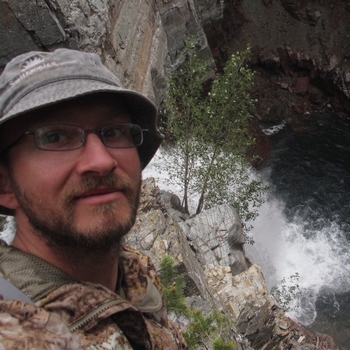About me:
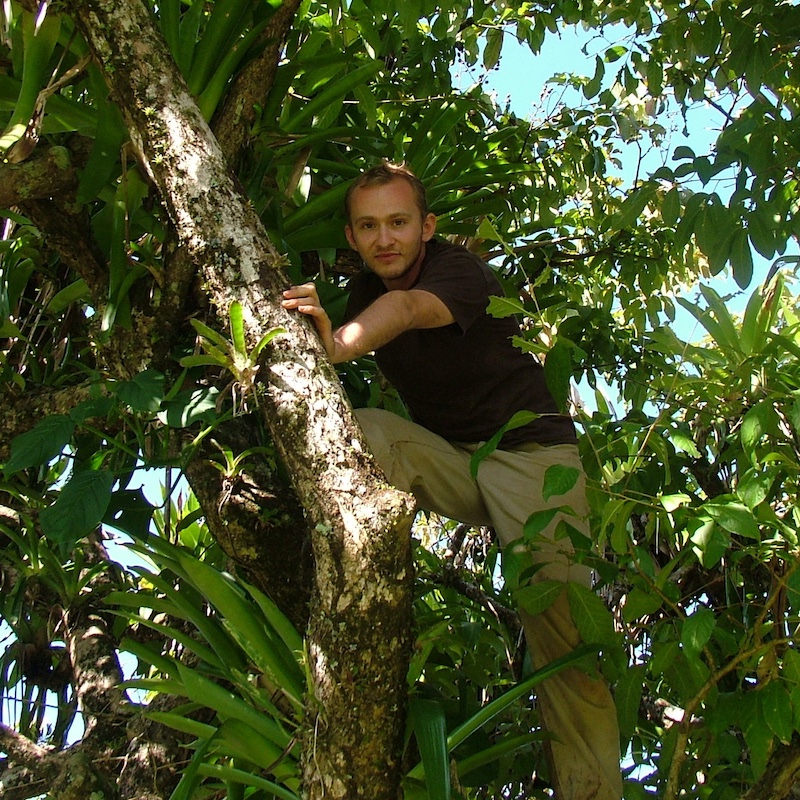
I have always been fascinated by the diversity of life and keen on learning about it. My undergraduate and M.Sc. studies in Mathematical and Natural Sciences and Biology at Jagiellonian University (2001-2006) have provided me with formal training and broad background in ecology and evolution, but also the opportunity to get immersed in research on invertebrate biology. As a student, I conducted field-based and laboratory experimental work on rock-dwelling snails, acarid mites, flour beetles, nematodes, and tropical insect communities, in Kraków as well as Scotland, Madagascar, Netherlands, and Panama. After graduation and an extra year of traveling and instructing scuba diving, I enrolled in Ph.D. studies, commencing my research career in invertebrate symbioses.
As a doctoral student at the University of Oxford, UK (2008-2011), supervised by Charles Godfray and Julia Ferrari, I studied the diversity and functions of facultative endosymbiotic bacteria of aphids. I manipulated symbiont infections in clonal genotypes of aphids, assessing the potential for horizontal transmission of bacterial strains within and across aphid species. I used the resulting aphid lines to test how symbionts affect aphid life-history traits, and particularly, their susceptibility to pathogens and parasitoids. My work provided valuable insights into how a diverse community of multiple bacterial types, often with overlapping effects on host biology, can persist within insect populations and communities.
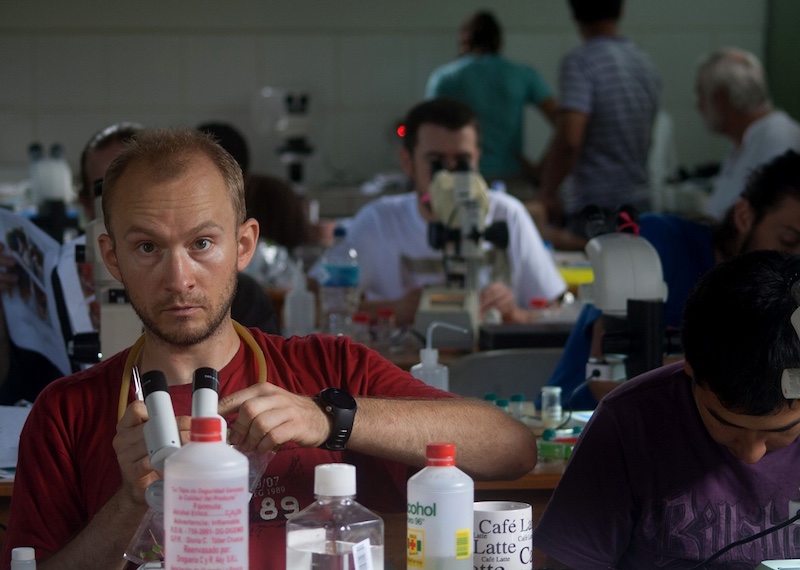 During a postdoc in the laboratory of Jacob Russell, at Drexel University in Philadelphia, PA (2011-2014), and associated visiting fellowship at the National Institute of Advanced Industrial Science and Technology (AIST) in Tsukuba, Japan (2013), I focused on the diversity and distribution patterns of bacteria associated with ants, and the description of bacterial roles in ant evolution. I used ants from around the world for microbial community characterization using ecological experiments, molecular methods, genomics, and microscopy. My work contributed to the discovery of massive differences between ant taxa in the numbers of bacteria that they harbor, but also in the biology and evolutionary histories of these bacteria. Our analyzes provided insights into bacterial specificity and switches between distantly related hosts and into genomic features that determine the biological properties of bacterial symbionts of insects.
During a postdoc in the laboratory of Jacob Russell, at Drexel University in Philadelphia, PA (2011-2014), and associated visiting fellowship at the National Institute of Advanced Industrial Science and Technology (AIST) in Tsukuba, Japan (2013), I focused on the diversity and distribution patterns of bacteria associated with ants, and the description of bacterial roles in ant evolution. I used ants from around the world for microbial community characterization using ecological experiments, molecular methods, genomics, and microscopy. My work contributed to the discovery of massive differences between ant taxa in the numbers of bacteria that they harbor, but also in the biology and evolutionary histories of these bacteria. Our analyzes provided insights into bacterial specificity and switches between distantly related hosts and into genomic features that determine the biological properties of bacterial symbionts of insects.
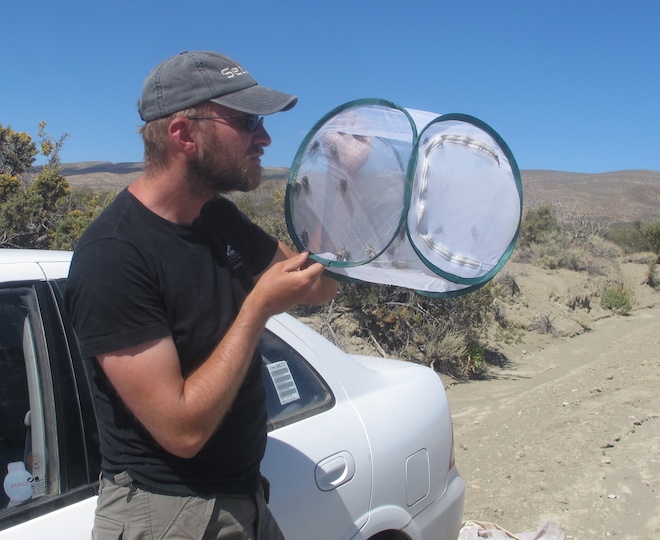 Between 2014 and 2018, I conducted postdoctoral research in the laboratory of John McCutcheon at the University of Montana in Missoula. I focused on the genomic evolution of a specialized nutritional endosymbiotic bacterium of cicadas, Hodgkinia cicadicola. In some cicada groups, this heritable symbiont had fragmented into complexes of multiple genetically and cytologically distinct yet interdependent cellular lineages – a process with no known parallel in other biological systems. I conducted extensive fieldwork in South America and characterized the collected cicadas using broad molecular screens, large-scale comparative genomics, and microscopy. This allowed me to understand the nature of these splits, their distribution across host phylogenies, and the evolutionary forces acting upon cicadas and their symbionts. I continue working with colleagues from Montana, Connecticut, Chile, Japan, and Poland to characterize these unique symbioses.
Between 2014 and 2018, I conducted postdoctoral research in the laboratory of John McCutcheon at the University of Montana in Missoula. I focused on the genomic evolution of a specialized nutritional endosymbiotic bacterium of cicadas, Hodgkinia cicadicola. In some cicada groups, this heritable symbiont had fragmented into complexes of multiple genetically and cytologically distinct yet interdependent cellular lineages – a process with no known parallel in other biological systems. I conducted extensive fieldwork in South America and characterized the collected cicadas using broad molecular screens, large-scale comparative genomics, and microscopy. This allowed me to understand the nature of these splits, their distribution across host phylogenies, and the evolutionary forces acting upon cicadas and their symbionts. I continue working with colleagues from Montana, Connecticut, Chile, Japan, and Poland to characterize these unique symbioses.
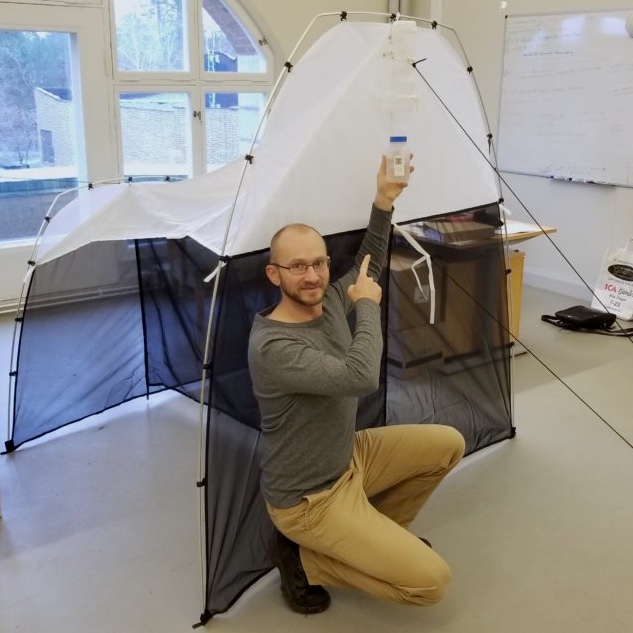 From October 2018 till June 2019, as a Researcher at the Swedish Museum of Natural History in Stockholm (Fredrik Ronquist Lab), I contributed to a massive insect biodiversity project, Insect Biome Atlas (IBA). The IBA goal is a comprehensive characterization of insect communities, high-resolution description of species distribution in time and space, and the identification of primary factors that drive their composition and abundance. The project uses high-throughput metabarcoding of thousands of insect community samples collected in Sweden and Madagascar. My primary focus in the project was the development of molecular and bioinformatic methods for the characterization of these samples. As a co-primary investigator in IBA, I remain heavily involved in the project.
From October 2018 till June 2019, as a Researcher at the Swedish Museum of Natural History in Stockholm (Fredrik Ronquist Lab), I contributed to a massive insect biodiversity project, Insect Biome Atlas (IBA). The IBA goal is a comprehensive characterization of insect communities, high-resolution description of species distribution in time and space, and the identification of primary factors that drive their composition and abundance. The project uses high-throughput metabarcoding of thousands of insect community samples collected in Sweden and Madagascar. My primary focus in the project was the development of molecular and bioinformatic methods for the characterization of these samples. As a co-primary investigator in IBA, I remain heavily involved in the project.
In July 2019, supported by large grants from the Polish National Agency for Academic Exchange and the Polish National Science Centre, I moved back to Kraków and started the Symbiosis Evolution Research Group. Our research at Jagiellonian University, rooted in my experiences described here, addresses some of the major challenges in the field of insect symbiosis and biodiversity. Check out the Research section of the website to find out more!


